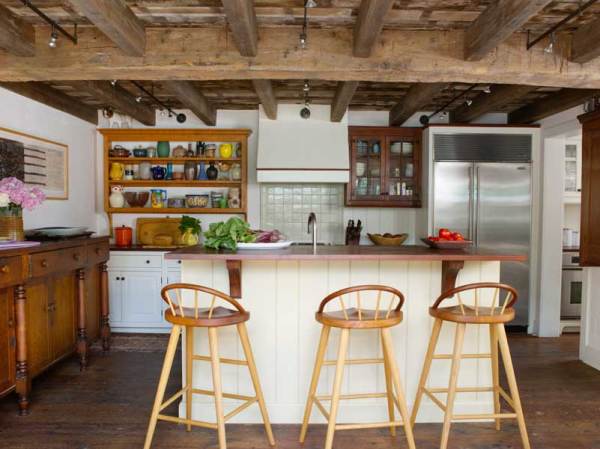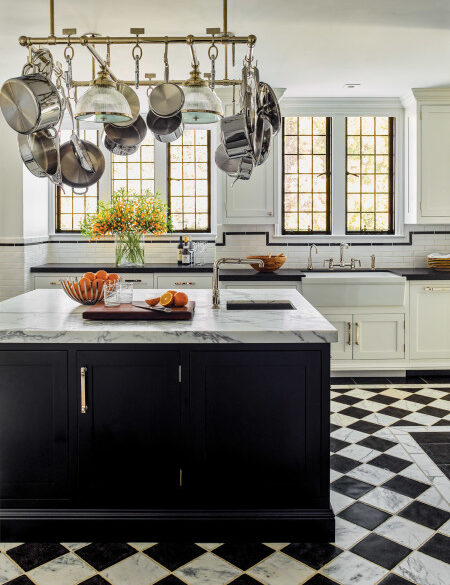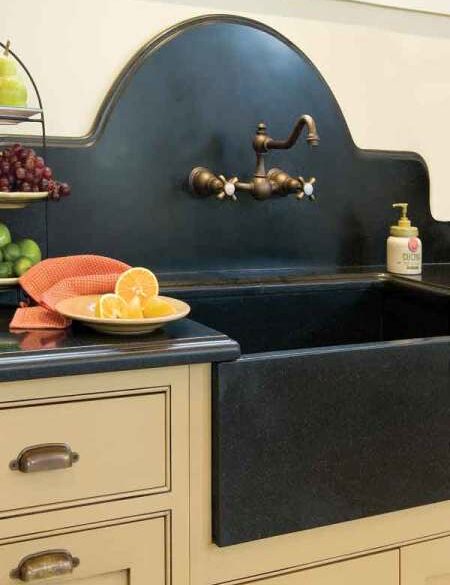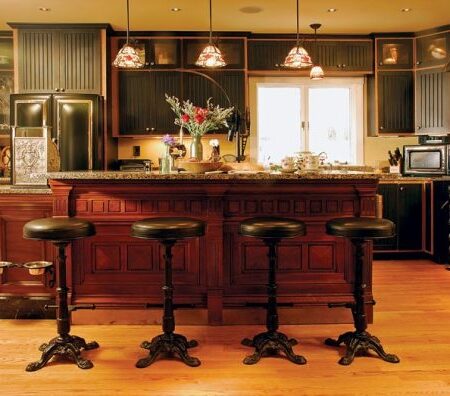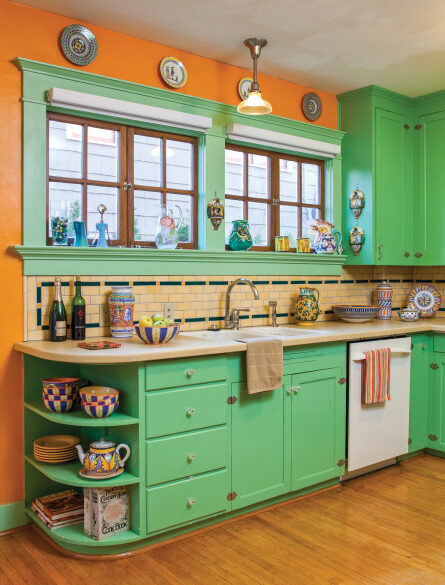This content was originally published on OldHouseOnline.com and has been republished here as part of a merger between our two businesses. All copy is presented here as it originally appeared there.
Putting a new, full-functioning kitchen into an 18th-century house is nerve-wracking. Too modern and it becomes a jarring anachronism. Too “colonial“ and it’s kitsch. Following any contemporary trends will date the room within a decade. For this remodeled addition to an old log and stone house, architect Peter Zimmerman kept it simple. His tactics were to mix traditional and contemporary: painted cabinets with open shelving and patina-rich antiques, stainless steel and black quartz with sculpted wood counter stools. The neutral palette of natural materials and white is a good backdrop for colorful serving ware and flowers cut in the garden.
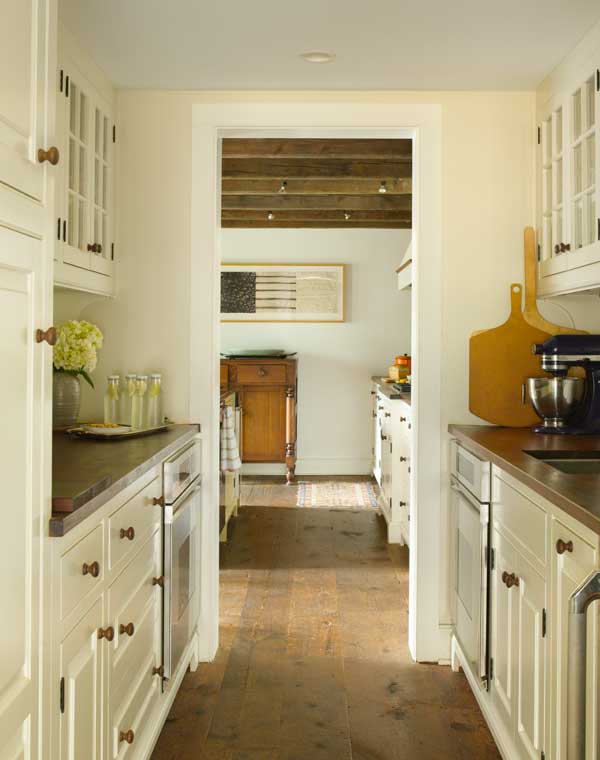
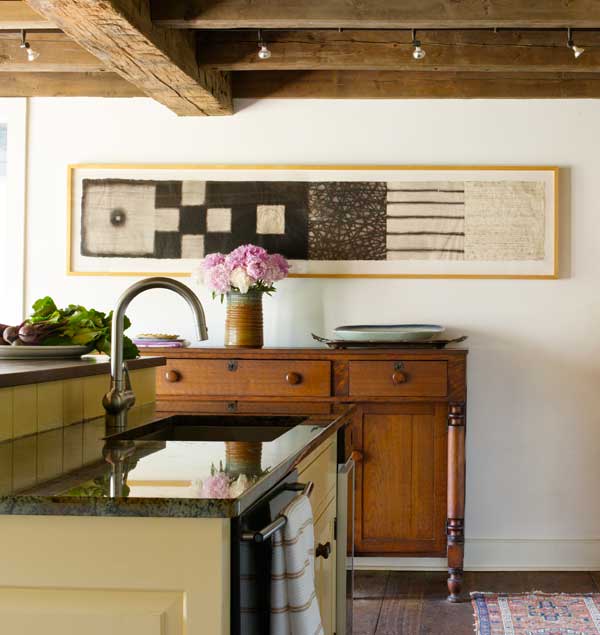
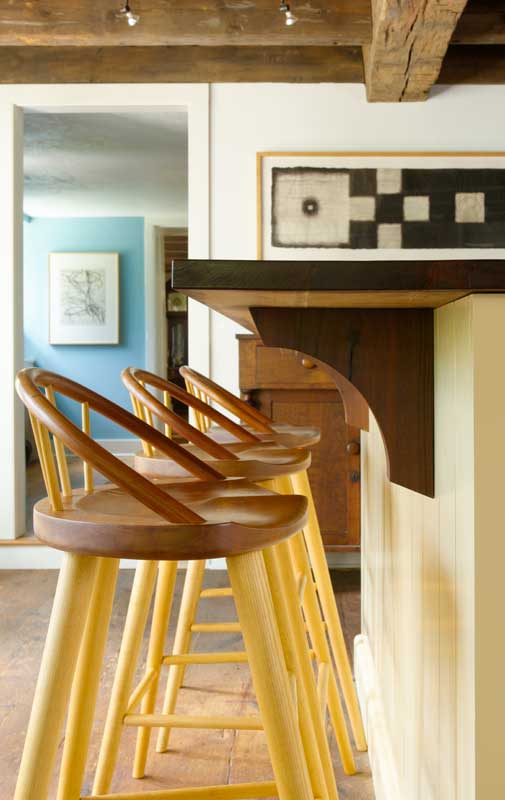
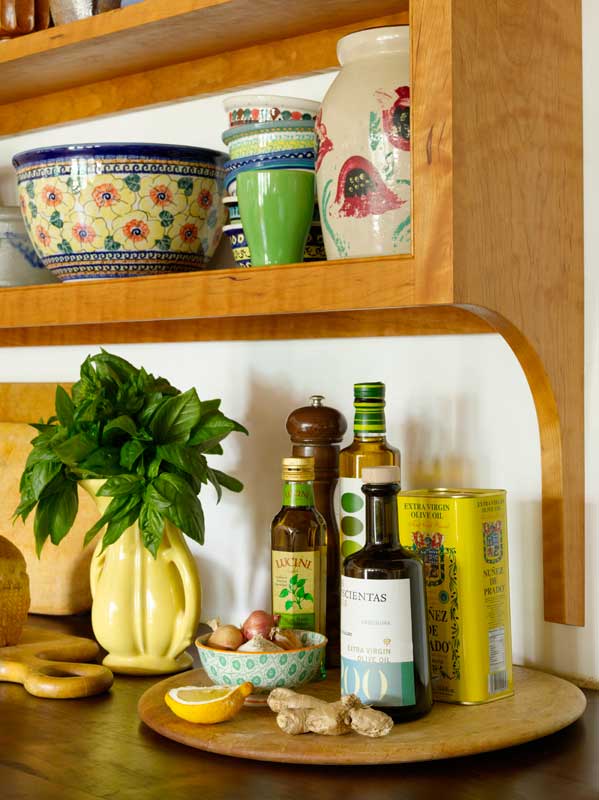
The log house in Wallace Township, Pennsylvania, was built in 1765 by Robert Wallace. The stone addition dates to 1800. A massive black-walnut tree in front of the house was documented by Dr. Edward Wildman in his book Penn’s Woods; in 1952, the tree’s girth was 11½’. Damaged by storms and rot, the tree had to come down in recent years, but the architect and owner had it made into lumber. The addition boasts walnut stairs, kitchen cabinets, and countertops.
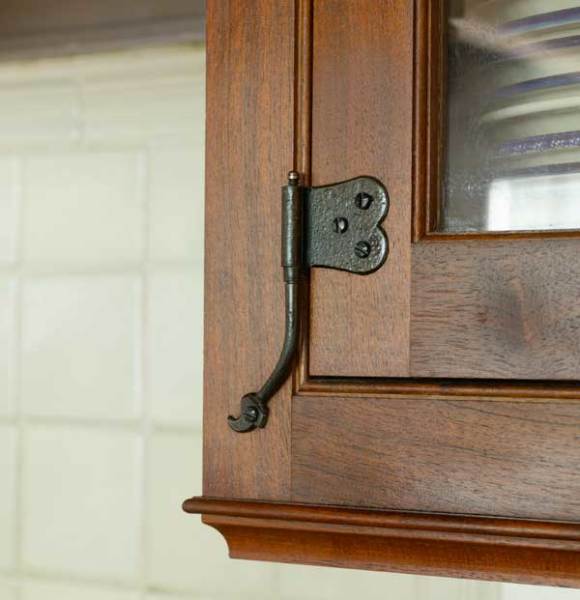
The remodeled area-which includes a second entrance, kitchen, separate pantry, and family room with space upstairs-sits largely on the footprint of an older addition that was removed. “The family had asked for better circulation, more light, and transparency between rooms and the outdoors,“ says the architect. The addition sits at the side and rear of the house, not visible from the historic façade.
Details make the kitchen a seamless addition. Base cabinets have a colonial, raised-panel inset door style-more traditional and furniture-like than an overlay door would have been. The ceiling is an antique (salvaged) summer beam and joist assembly with antique flooring above it.
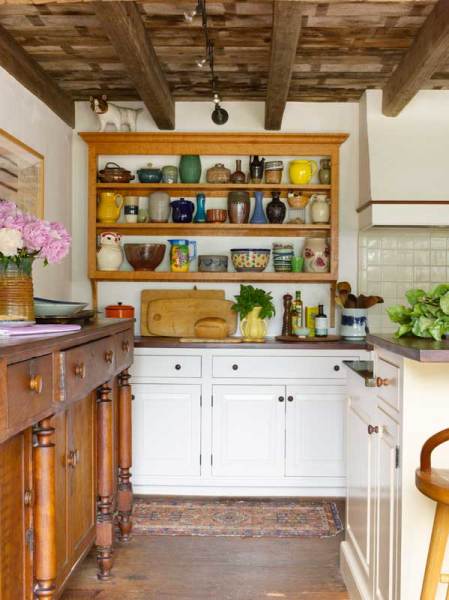
Without upper cabinets, the room is less “kitchenlike,“ yet there’s plenty of storage space in the extra furniture and a separate pantry. Countertops are black quartz in wet areas, and walnut (milled from the old tree) elsewhere. The island is faced with “Philadelphia fencing,“ a beaded board cladding, to keep it country. Floorboards are made of 200-year-old pine.

